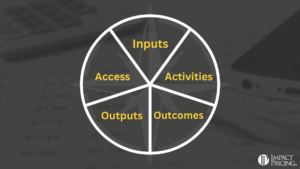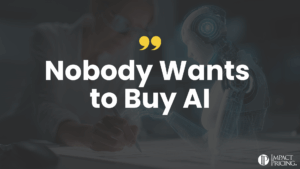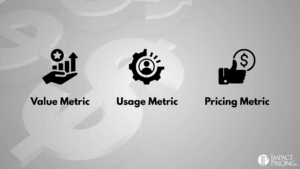You can listen to the full audio version of this blog we call — Blogcast.
When I work with hardware companies, it is often challenging to get them to stop focusing on costs as they set their prices. And here’s where software companies have a huge advantage over hardware companies. Their marginal costs are really close to zero. That means it’s almost impossible to use cost-plus pricing. Otherwise, they wouldn’t make any money.
Last week, I was coaching a SaaS company whose product can send thousands of text messages. One client sends 100,000 texts a month–which costs my client around $1500—in their mind, charging a per text message fee to cover their costs made sense. This is cost-plus thinking.
Of course, I disagreed, especially because they used a per-employee-based pricing metric for everything else. The value they delivered, even with the texts, was correlated to the number of employees, not the number of texts.
What should they do? Remember, buyers trade money for value, and confused buyers don’t buy. They should charge for the text option per employee, just like the rest of their product. That’s what makes sense to the buyers.
You may be thinking the same thoughts they were, but what about companies that send out too many texts? Here are two answers. First, you can identify those few companies and raise their prices if they are not profitable. They aren’t a good customer if there isn’t enough value for them to pay a higher price.
The second and best option is to review all of their customers and determine the average number of texts per employee sent and the associated cost. Ensure the text option’s value-based price is significantly higher than the average cost. Some companies will use more, some less. But on average, my client will make more money, and their pricing will make sense to their customers.
Maybe they will lose money on the text option from a customer or two, but as long as they make a lot of money from the other customers, who cares? They will sell more because their pricing makes sense to their buyers.
Insurance is an extreme example of this strategy. Think of fire insurance for your house. How much do you pay? If your house burns down and the insurance company pays your claim, they will lose money on you. But they make money on everyone who doesn’t make a claim, a lot of money.
My recommendation is to set your price in a way that makes decisions logical for your buyers. Tie it to value delivered. Buyers trade money for value, and confused buyers don’t buy. You take a little risk on each buyer but make a lot more money overall.
Share your comments on the LinkedIn post.
Now, go make an impact!















